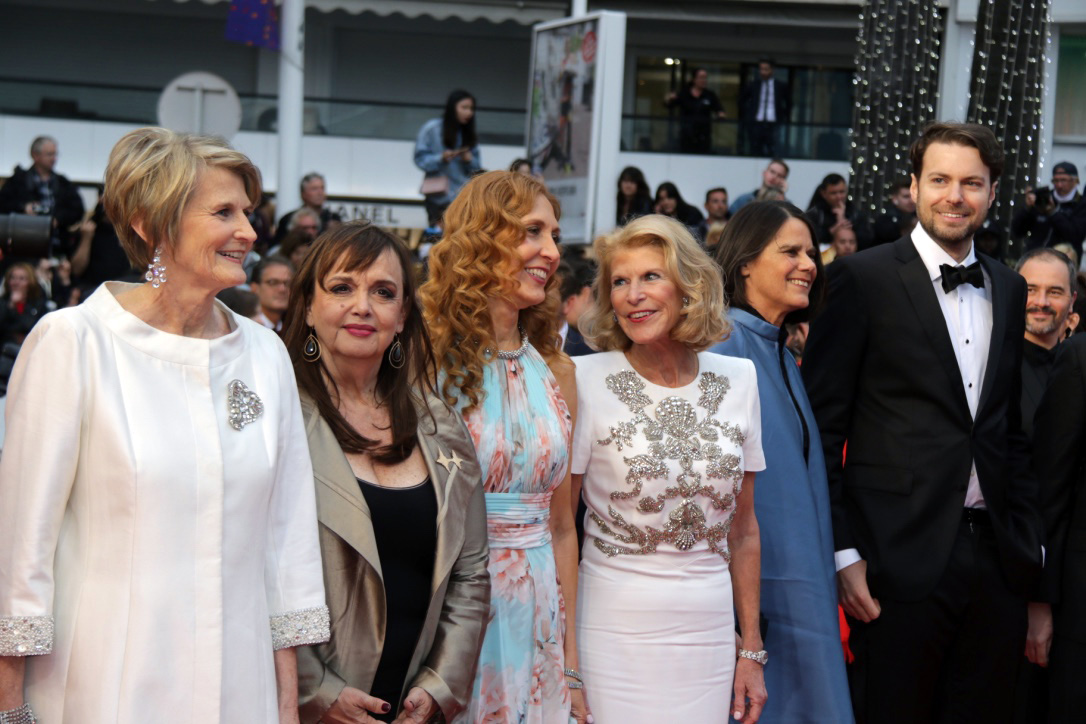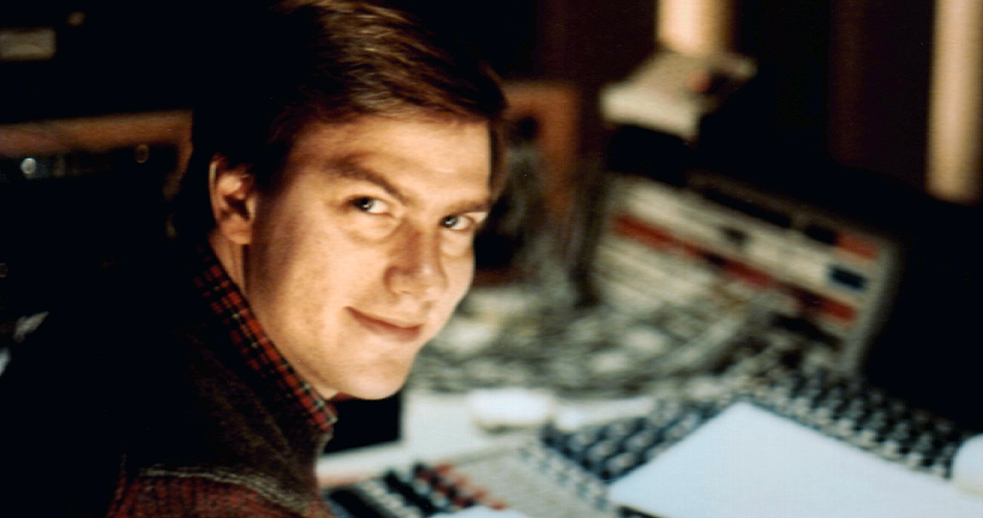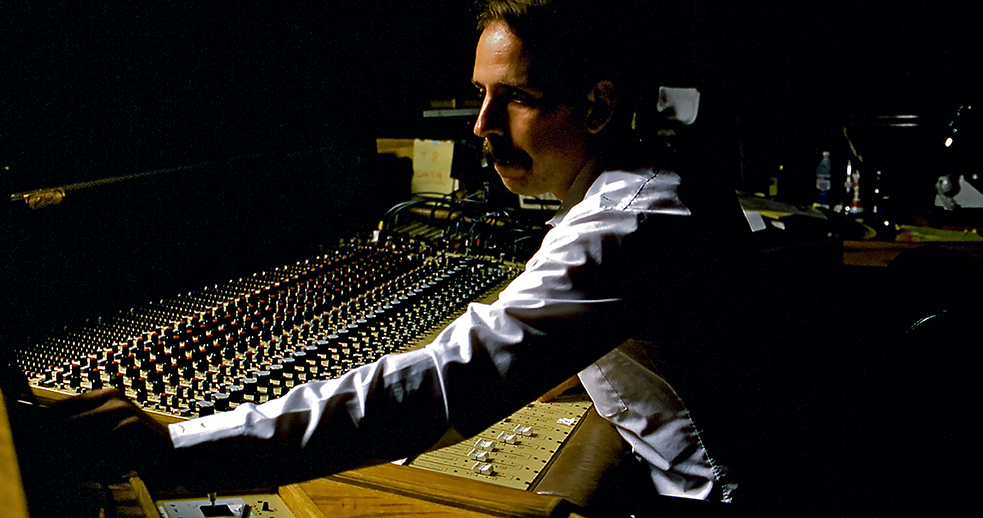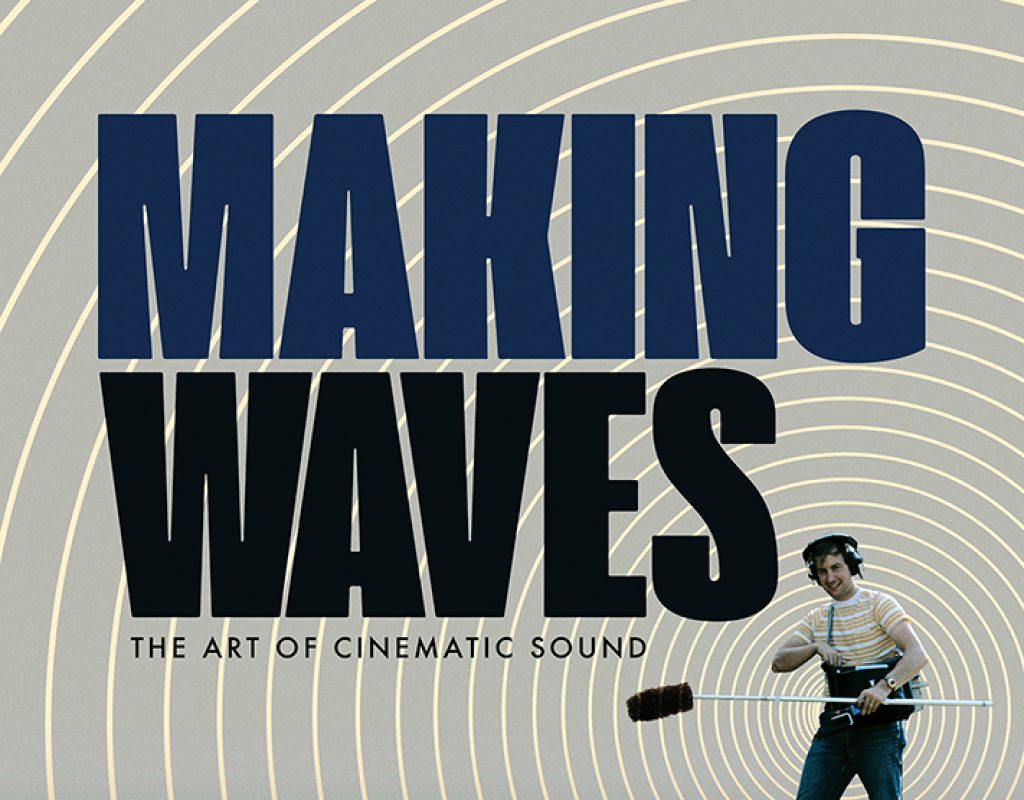Making Waves – The Art of Cinematic Sound, is an outstanding achievement not only as a stand-alone documentary film, but also as one of the only films that is dedicated solely to the art of sound for film. As we all know, when films started, sound was either done live with musical accompaniment or was simply exhibited silently.
It is a huge challenge to tackle such a wide ranging and meaningful advancement for film storytelling and yet undeterred, Midge Costin, herself a working sound professional, took it on. We spoke at length about her work on the film and her work as a filmmaker with sound, and as an educator.
Woody Woodhall (WW): Making Waves is your first film as a director and it’s been wonderfully received. Making documentary film is a long, grueling process that takes an enormous amount of time and energy. Can you talk a bit about the process of pulling it all together?

Midge Costin (MC): Yes, for my producing partners – Bobette Buster & Karen Johnson and myself – it took us 9 years to make the film! And honestly, I started researching this film and working on it way earlier in 2002-4 but when I realized that there was essentially no such thing as Fair Use – which allows you to use copyrighted material if well documented – I dropped the project. I knew that the only way to do this right was to play lots of film clips and there is no way we would have had the money to pay for the number of clips we needed and have used! Then in 2010 Bobette knew that Fair Use had passed and she approached me about doing this project after talking with Gary Rydstrom who she met at Pixar. Our editor, David J. Turner came on soon after my initial discussions with Bobette and Karen to help make a proof of concept video to help raise money. There was no money forthcoming which was heartbreaking. I don’t think anyone could understand how we could make this entertaining and thought it was going to be a technical piece. So we struggled all the way and it was our Executive Producers who made it possible – especially my sister RoAnn Costin who is responsible for us getting this film done. Without her we would still be working on it I think.
Once we figured out how to employ Fair Use and we had the backing of my sister and other Executive Producers we dove headlong into making this film with so much enthusiasm and passion – nothing was going to stop us!
WW: You’ve assembled a stellar team of noted feature film directors as well award-winning sound pros for interviews. Can you discuss the impact of “sound aware” directors for films?

MC: As Gary Rydstrom says in the film, it’s really the filmmakers who have made the difference in improving sound and making it matter creatively. If there weren’t directors who cared about using sound creatively then sound would not have advanced. It’s never sound for sound sake but always as part of the storytelling process. Getting these big name directors on board who contributed so much to the history and aesthetics of cinema sound but also because they could attract an audience which might not happen if we just featured the behind-the-scenes men and women who do the work. George Lucas and Steven Spielberg were behind the project from the beginning but getting them scheduled for an interview was next to impossible. It was David Lynch who was the first director who agreed to set up an interview and with an artist of that caliber everyone knew we were serious.
Honestly, we got most of the directors through their sound people. These directors have respect for their sound collaborators and were willing to sit for an interview because of their respect for them. My contacts and credits in the film industry didn’t hurt. We get tired of people not understanding what we do but I think the sound people knew I had a solid career as a sound editor and then I had been teaching sound at USC for many years.
WW: Having a career in post sound, did working as a director bring fresh insights into that aspect of filmmaking for you?
MC: Well, my teaching definitely brought an important perspective on how to present sound to the common person who might not have any idea what we do. This took a while to develop. The insights I got working on the film as a director was the history part – I really didn’t know that much about the history of cinematic sound. I was of course a part of this history – from analog to digital technology for example. When I first started in the 80s I was sometimes using effects that were recorded optically which goes back to the earliest days of sound recording and editing! I loved cutting on magnetic oxide film but wouldn’t go back for anything given all the flexibility and creative processing that you can do today.
But I didn’t know the overall history and how I fit into it which now is much clearer to me. Since I team teach with producers, directors, writers, cinematographers, production designers and editors I have to say I have learned a lot over the years. And being on the set gave me an appreciation for production. I was really grateful to my Director of Photography Sandra Chandler as we have been friends since film school and she really had my back on the set. I get more and more comfortable making decisions and was super appreciative to have a great team in production.
WW: I imagine in this process that there is a lot of stuff that never made it to the screen. Are there any highlights that got cut? Will we eventually get to see that stuff too?
MC: Imagine that we did 90 interviews and have almost 200 hours of material! But I wanted to make sure to get as much as we could because we discovered that there wasn’t all that much in the archives and libraries that captured the sound process. So I felt compelled to really do it justice at this juncture – documenting the second generation of cinema sound people. But I was determined to make a 90-minute film – I believe this corresponds to the human attention span so I didn’t want it to be much longer.
So of course we have so much great stuff on the cutting room floor! It’s painful! And so many important people who never made it in the film. It was crazy! But we will add some of these to our supplemental material for the BluRay and DVD. However, I can assure you that we will make sure that all of these interviews will see the light of day. We archived it really well by transcribing most of the interviews and breaking them down on Avid timelines into subject matter. We always thought we would make a series but someone would have to come forward to finance that. Just putting that out there…
WW: The subject matter fits exactly with your life’s work. Can you take a moment and discuss your start in the industry? Can you also talk about being female in a male dominated industry?
MC: I didn’t get sound when I was in film school. It seemed technical. I wasn’t thinking about it in terms of story and character and emotion. I came out of film school wanting to be a picture editor. I apprenticed and then assisted on a show or two and then a friend from film school who had become a sound editor called me up one day and said none of the union editors at the sound house he was working at would touch 16mm (we were all working on 35mm in the industry at that time) so he said if I came in he would show me how to cut effects and he would cut the dialogue.
I had a short film I needed money to finish so I “lowered myself” and took the sound job. Then I realized that I was the only sound effects editor and I needed to think about setting mood and tone and dealing with the plot points aurally. And then soon afterwards the editor who I had picture assisted for asked me to take his place and I asked who was doing the sound. When he said they hadn’t hired anyone yet I asked if I could do it. This was the beginning and I think because I had been the reluctant sound person, I was like a born-again and have been super enthusiastic and love spreading the word of sound.

Then I found myself working with George Watters and Cece Hall on action adventure movies where sound is especially important it seems. Most people would have no idea that sound seems to have a history of gender disparity in terms of who gets hired to edit certain types of sound. So sound effects – guns, cars, explosions, doors – traditionally were edited by men. Dialogue editing which is fixing the production tracks that are recorded on the set, entails doing lots of micro-surgery like adding ‘S’ to a word that got stepped on by another actor, or taking out birds, or [removing] a car by, in the background. Essentially its very detailed work and women were stereotyped as having more patience and not able to cut the big action sounds which is ridiculous.
Because I started as a sound effects editor, I was one of the few women cutting effects as opposed to cutting dialogue or Foley or ADR. I enjoyed the work and it felt important to be doing the big action movies to prove there is no reason why certain sounds are more male or female oriented. And on the mix stages there were hardly any women. That environment could get pretty crude and intimidating. I have always found in the work environment – in the industry or in academia – that a more diverse team of people that reflects the world at large makes for a much healthier and happier environment.
WW: You are an Associate Professor at USC Film School and the first and continuing Kay Rose Endowed Chair in the Art of Sound and Dialogue Editing. What an honor! Can you tell us about your work over the years as an educator?
MC: I just got promoted to full professor recently, thanks to the film I’m sure. I LOVE teaching. It’s one of the few things I love more than cinema sound. And because I felt so much passion about sound after discovering it outside of school, I was very excited about teaching it to film students like myself who were missing the storytelling aspects of it. Even in the midst of working on those big action adventure movies in the 90s, I would try to teach a course at night as an adjunct professor whenever time allowed. I believe everyone who works on a film is a filmmaker. And the more you know about different aspects of film the better you are at your job.
I see myself as teaching future directors, producers, cinematographers, editors, production designers, etc. about sound; not just the few who will go out into the word to work in sound. I teach them how to use sound to reflect character, plot points, mood & tone, rhythm; using sound in an emotional way is very satisfying. It’s very gratifying. Plus, I feel I get to teach students how to listen – to the world at large – to appreciate their sense of hearing and of sound. It doesn’t get much better than that in terms of having a satisfying job.
WW: There have been many technical changes just in the time that you’ve been a professor since 2000. How has that changed the way you teach students sound today?

MC: One of the big points we wanted to make in the film was that the most important thing in sound is not the technology. We did amazing things when we were working with analog and even optical sound! What matters is how you use sound to help with the story, with character, with mood and tone, with emotion. So breaking down scenes and getting students to think in terms of sound is not that different. But the technology has made major strides in making it easier to do things by yourself, more effectively and efficiently. So as an editor you can process sound so much more than you ever could – dealing with frequencies and reverb and placing sounds where you want them to go (panning)
WW: I saw the film in a theatre and it sounded amazing. You had the advantage of using some of the most “sound-centric” blockbusters ever made. Talk about the sound edit and the sound mixing for “Making Waves.” Did that give you new takeaways from the directing chair into post audio?
MC: Well, our editor, David J. Tuner, did an amazing amount of work in the picture editing process. It’s why I chose him for the job. He had been a student of mine at USC and he was extremely talented in both picture and sound editing and design. So when Kimberly Patrick and Baihui Yang came on as supervising sound editors – also former students who developed their talents & experience up at Skywalker Sound – I knew they would just continue to enhance all the work that David did and come up with more in-depth work and help with difficult transitions, add Foley, needed ambiences, etc. Sung Rok Choi (another former student) cut the dialogue and was very instrumental in making some really tough edits work. That was great micro-surgery on his part I have to say. Baihui and Kim helped convince the insanely talented Tom Myers to be our re-recording mixer. Wow! What a team to be working with.
I swore I would not do to the sound people what happens to us all the time – dreaded picture changes while you are on the mix stage. But guess what? We had changes – sorry! Not too many – but I didn’t want any! To be there on the mix stage and listen to the magic that Tom Myers would come up with was a beautiful thing to behold. It could be tough coming in and out of those huge blockbuster films or getting out of the quiet ones that were older and might need help with noise reduction. And even though I was a sound editor for years I have to say that what Kim, Baihui and Sung Rok could do on the stage in the way of editing – when we needed to make changes – was truly magical. And they were so fast!
I think the completely new experience for me (now as a director) was working with the music. Our composer, Allyson Newman, was a pure joy to work with! It was so fun to have a spotting session with her and talk about themes and issues relating to emotion and timing. And she also created music to help with some difficult transitions. But the recording session with our mixer Dan Blanck and the musicians…it still makes me teary. When I went into the recording stage to be with the musicians as they played – a 19-piece orchestra – I sat in front of the 9 violins and the music made me cry. It’s funny because when you work in sound or at least during the era when I was, sound and music can really clash and if they haven’t collaborated during the process, you can duke it out on the mix stage about what should take precedence, sound or music. Usually those of us in sound feel we aren’t appreciated. But on this film I feel Ally’s work is totally underappreciated! She is bringing so much emotion to the movie but in a beautiful and subtle way. I feel she hasn’t received enough recognition for her work on the movie.
WW: You talk shop with the best of the best working in post audio – Walter Murch, Gary Rydstrum, Randy Thom, Ben Burtt – were there things that even surprised you to learn about regarding sound in creating this film?

MC: I think I had read enough and talked with or heard talks by all these great sound designers so nothing they do in creating their sound design was a surprise but as I mentioned earlier the history is what blew me away. Discovering the effect that Barbra Streisand had on getting Dolby Stereo into theaters – that was a revelation – even one that Barbra didn’t know! She just thought Dolby Stereo was already an option. There had been stereo and even surround sound earlier with films like Fantasia and the Cinerama films but her influence along with Kubrick and George Lucas was to convince the studios it was worth changing the theaters and the way the average viewer could hear movies.
Another fact that was mindboggling to me was that Walter Murch and his re-recording mixing partners – Mark Berger and Richard Beggs – on Apocalypse Now had never even mixed a stereo film before they designed surround sound! And even before all this – to hear Murray Spivack talk about how he created the voice of King Kong back in 1933 and how they had to hide him in the music department or the producers might have said “don’t bother with all that” – there’s been lots of change but in some ways…not so much in other respects! But I found these stories absolutely fascinating.
WW: You and your team did an amazing job of tackling a very broad subject. You take us from the beginnings of sound, to the evolution as the technology changed, with many of the talented sound artists who took advantage each step of the way. Can you discuss the process of determining the scope of what you’ve covered in crafting the film?
MC: Early on the process, my producing partners Bobette Buster, Karen Johnson, and I got together with our editor David J. Turner for three or four days to discuss a timeline, the history, the important films & directors & sound professionals. I think we thought we might have more details of the technological history but we discovered we had to give that up for other things we wanted.
For example, I really wanted to cover the contemporary process and breaking down the different stages of sound, and the jobs from production sound recording, to re-recording mixing. But this is the crux of what took so long in editing. We were covering so much material. And this is where our supervising editor Thomas G. Miller really helped out in the last 2 years as we put all the scenes we had together and we were determined to keep it as close to 90 minutes as possible. It was so helpful to have Tom who hadn’t been on the show from day one and who could help us find the structure and “kill our babies” – all the precious shots & scenes it was hard to part with.
WW: I love the word play in the title – “Making waves” of course can mean making sound and creating waves, also sound recordings are called wave files, and also of course, a more general meaning of the term is to – shake things up. Any particular significance to the title?

MC: Yes, all those things plus the one big thing we point to about “shaking things up” is that time in the 70s when Coppola and Lucas and Murch move north out of Hollywood to do things their own way. They wanted to make sound a more significant part of the process like bringing on the sound person early to be cutting sound while the picture is being edited (Walter Murch on THX 1138), and creating the sound design and library before they even shot a frame of the film (Ben Burtt with Star Wars), and transforming the way we mix and present sound in the theater based on the directors creative ideas (Coppola hearing the Tomita 4 track album during the shooting of Apocalypse Now and asking for what became 5.1 sound created by Walter Murch, Mark Berger and Richard Beggs), as well as being a sound designer and re-recording mixer which really started at Zoetrope and then continued at Skywalker Sound. So many things happened outside of Hollywood by these people who were “making waves” including Gary Rydstrom’s work in animation with Pixar and CGI with Jurassic Park and beyond.
WW: Since this is your directorial debut – what awaits? What is your new project in the offing?

MC: I have so many possible subjects that interest me that are swirling around in my head but it’s too early to talk about them. But I will say that overall the process of making this film was so incredibly creative and involved so many inspiring collaborations that I am looking forward to moving ahead with our next film.
Look for Making Waves playing at theatres right now. It will be on DVD/Blu-ray and on-demand at some point later in the year.
Woody Woodhall is a supervising sound editor and rerecording mixer and a Founder of Los Angeles Post Production Group. You can follow him on twitter at @Woody_Woodhall

Filmtools
Filmmakers go-to destination for pre-production, production & post production equipment!
Shop Now













